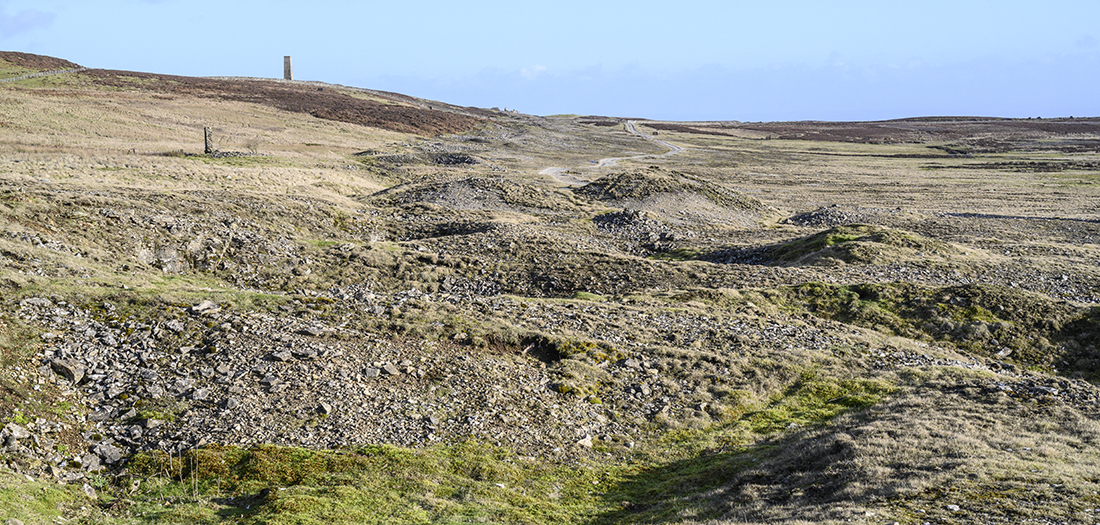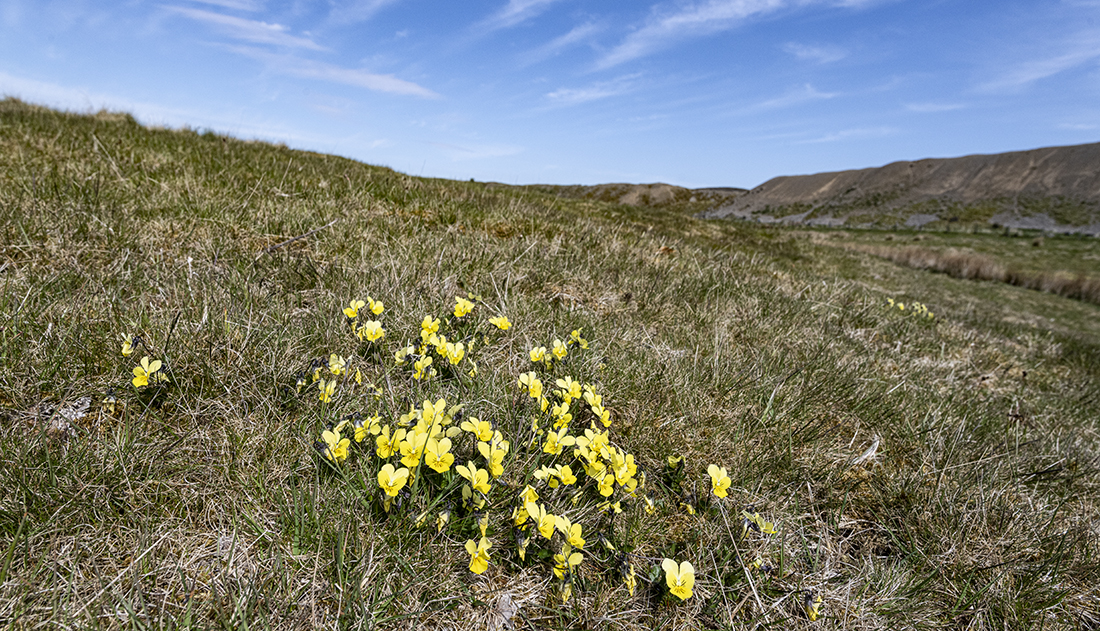Lead mining
Mines, metals & calaminarian grassland
The underlying geology of Redmire consists of Carboniferous period, sedimentary rocks belonging to the Yoredale series. Yoredale is an old name for Wensleydale, where this series was first studied. Essentially, the series is an alternating set of layers of limestones, sandstones, shales and coal, topped by millstone grit, an abrasive sandstone. Earth movement caused faulting, opening vertical cracks, into which mineral rich solutions flowed. These cooled to form lead rich veins that characterise much of the area and formed the basis of a significant mining industry. In Redmire, the Cobscar Vein was discovered in the mid 17th century. This traverses Redmire Moor at the northern end of the parish. The surface elevation is around 360m above sea level. The ruins of a lead smelting mill, Cobscar Mill, and the Calamine House still stand. Calamine, now named Smithsonite, is zinc oxide. The Calamine House was working during the late 18th - early 19th century. Other heavy metals are also present and these, together with the harsh climate, still have a significant impact of which species can survive.
Close to the lead veins is a limestone quarry, worked mainly during the 19th - 20th centuries, but now closed. Unfortunately, access is not permitted so I have excluded this habitat.
Cobscar Rake

The photograph above shows part of Cobscar Rake. The lead vein is traced out by the line of spoil heaps, resulting from the exploitation of the vein. The vertical structure, closest on the left, is the north wall of the Calamine House. The chimney on the horizon belongs to Cobscar Mill. A stone track follows the rake, giving access to the moor, which is now used for sheep grazing and grouse shooting. Left in the picture is north and right is south. Some considerable churning of rocks has taken place, so rocks from underground now lie on the surface. Galena, lead ore, can still be found in the spoil.
Environmentally, the rake and surroundings is a mix of calcareous and heavy metal polluted rock, with adjacent acidic heather moorland on sandstone. The relatively high elevation leads to wet and windy conditions, but an open aspect and south facing slopes are bright and warm on sunny days.
Slide 1: Ruins of Cobscar Mill, a former lead smelting mill, built c.1762. January.
Slide 2: Sandstone and lime mortar wall inside Cobscar Mill, north facing and shady, showing a cover of the alga Trentepohlia spp. January.
Slide 3: Cast iron post at Cobscar Mill with a cover of the lichen Lecidea lithophila, south facing. January.
Slide 4: Moorland grass cover at Cobscar Rake, Sheep's Fescue, Festuca ovina. May.
Slide 5: Rabbit burrow, populated by Wild Thyme, Thymus polytrichus, a plant tolerant of heavy metals and therefore regarded as a metallophyte. Rabbit burrows can support a suprisingly rich flora. July.
Slide 6: Disused small quarry with a typical ground cover of moss and lichen. The two dominant mosses are Springy Turf Moss, Rhytidiadelphus squarrosus and Red Stemmed Feather Moss, Pleurozium schreberi. These two are complimented by the lichen Cladonia rangiformis, a metallophyte. April.
Slide 7: Springy Turf Moss, Rhytidiadelphus squarrosus and Red Stemmed Feather Moss, Pleurozium schreberi, with the lichen Cladonia rangiformis, a metallophyte. April.
Slide 8: Boggy ground outside the Calamine House, showing the characteristic blue surface film of methane, produced by anaerobic bacteria. June.
Metallophytes
A plant or lichen which is tolerant of heavy metals is regarded as a metallophyte. This is not a taxonomic group in the botanical sense. Obligate metallophytes require heavy metals, whereas facultative metallophytes tolerate heavy metal contamination, but may be found elsewhere. They form the characteristic flora of old lead mining sites.

Calaminarian grassland describes a habitat of typically short turf in the vicinity of historic lead mining sites and supports a characteristic flora. This includes Mountain Pansy, Viola lutea, shown in the photograph, Wild Thyme, Sheep's Fescue, Harebell, Alpine Pennycress and Ribwort Plantain.







